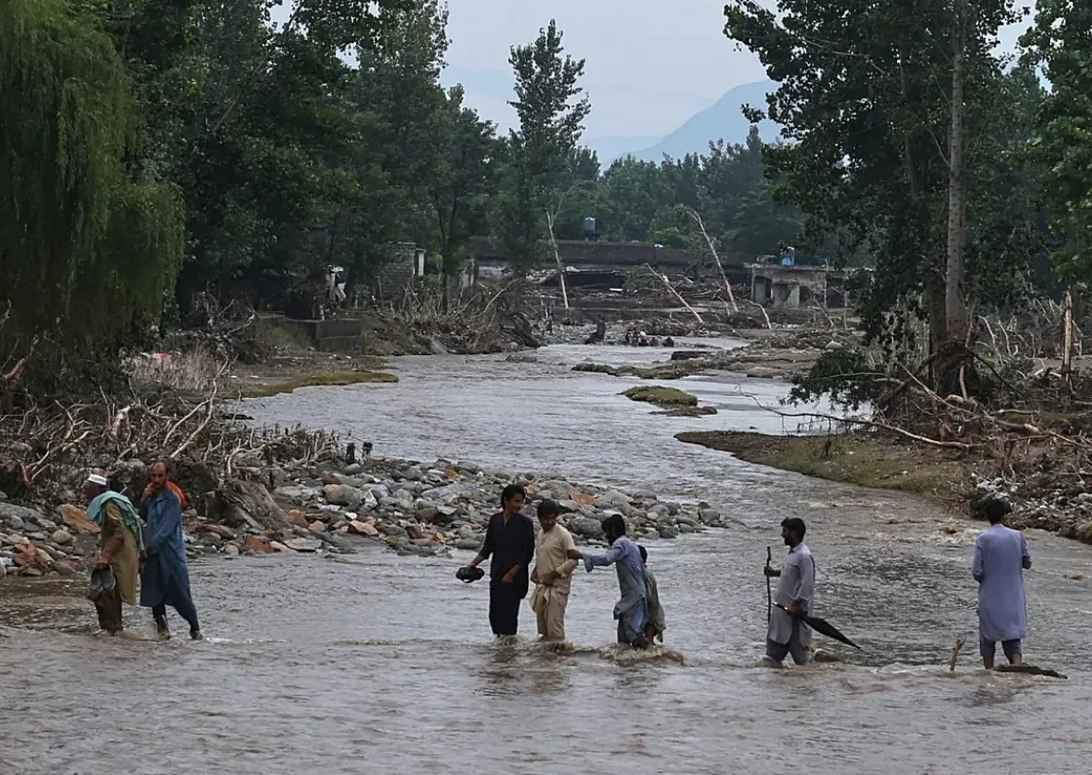ISLAMABAD — Pakistan is facing an alarming convergence of climate extremes — early monsoon rains, scorching heatwaves, and rapid glacier melt — causing devastating floods, infrastructure collapses, and widespread displacement across the country.
According to a detailed briefing by the Sustainable Development Policy Institute (SDPI), the monsoon season began two weeks earlier than usual, starting on July 1 instead of mid-July. Meteorologist Dr. Shehzada Adnan explained that the early onset brought 13% above-normal rainfall in northeastern Punjab and Kashmir. This, combined with temperatures soaring 6 to 7°C above average, accelerated glacial melt and triggered multiple Glacial Lake Outburst Floods (GLOFs) in northern regions.
Experts noted that multiple weather systems — including Bay of Bengal depressions and abnormal westerly shifts — intensified the crisis, bringing flash floods to areas already vulnerable due to poor urban planning and inadequate disaster management systems.
Dr. Shafqat Munir, senior researcher at SDPI, warned that 2025 is shaping into a “climate-induced humanitarian emergency”, emphasizing that the situation is no longer just a natural disaster but a failure to prepare and adapt.
Ground Zero: Floods, Chaos, and Loss
The early monsoon, paired with extreme heat, has left hundreds dead and thousands displaced.
- In Buner, flash floods swept through entire villages “like Judgment Day,” leaving over 220 fatalities and massive destruction of property.
- Karachi experienced urban flooding after 163.5 mm of rainfall near the airport, submerging roads and disrupting essential services.
- Mountainous regions in the north saw glacial collapses that intensified flash flooding and washed away key access routes, isolating remote communities.
Survivors recount sleepless nights, watching water levels rise rapidly with no effective evacuation plans or timely government support.
Why the Early Heat Made It Worse
Climate experts highlight that heatwaves magnified the monsoon’s impact by increasing atmospheric moisture. For every 1°C rise in temperature, the air retains 7% more water, resulting in heavier and more destructive rainfall.
Additionally, prolonged heat hardened soil layers, reducing water absorption and increasing surface runoff, which worsened flash flood conditions. Despite early warnings by weather authorities, most vulnerable communities lacked training and preparedness for immediate evacuation or emergency response.
What Needs to Change
Environmentalists and policy advocates are calling for urgent, systemic reforms to tackle Pakistan’s worsening climate vulnerabilities:
- Investment in climate-resilient infrastructure and improved flood management systems.
- Establishment of early warning networks and community-level training drills.
- A long-term national climate adaptation plan, integrating urban planning, water management, and agricultural reform.
Leaders from political and scientific circles alike stress that without bold action, the country will continue to face recurring cycles of destruction and loss.
The Bigger Picture
Pakistan’s contribution to global emissions is minimal, yet it remains one of the most climate-vulnerable countries in the world. This year’s deadly combination of extreme heat, early monsoon, and glacial flooding is a stark warning that climate change is no longer a looming threat — it’s a present-day reality demanding immediate, coordinated action.
This story has been reported by PakTribune. All rights reserved.



